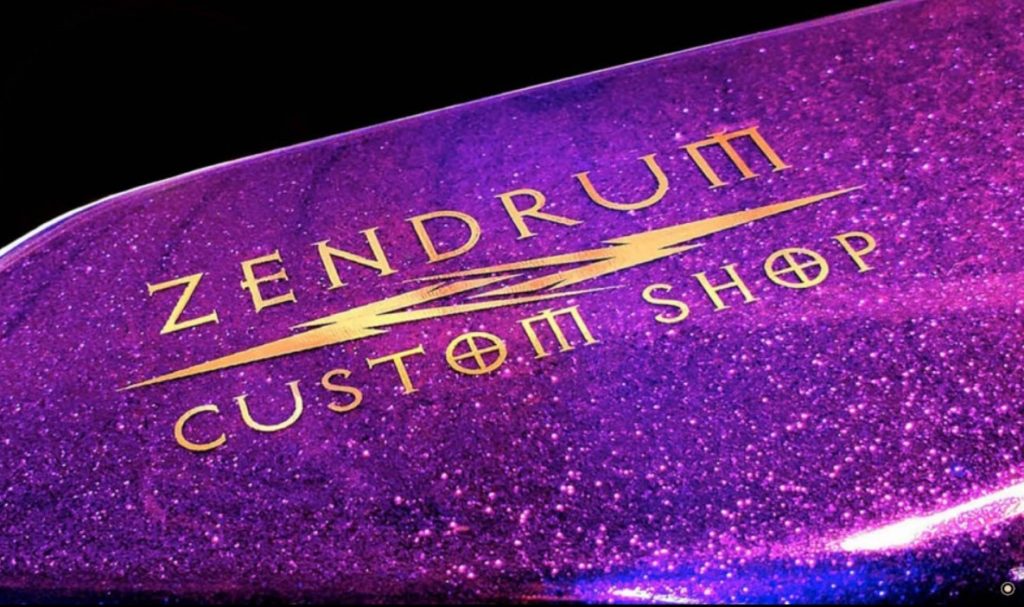Beginnings
The evolution of the Zendrum began in 1986 when David Haney made his first electronic drumkit from inexpensive sensors and old drumpad parts, using some of the first MIDI drum machines for the sounds. His friend Kim Daniel, a lifelong drummer as well, had begun also to experiment with “triggering” to make it easier for him to move and play the drumset and have more control over his volume and sounds. The two began to discuss how fragile and unfriendly all of the existing drumstick controllers were but how exciting the palette of electronic sounds was becoming as the 80’s drew to a close.

Inspiration
In 1991 David went to a Bela Fleck and the Flecktones concert and was amazed at the creativity and virtuosity of “Future Man” Roy Wooten playing his electronic drum device, the Drumitar. David was still transporting and maintaining a large electronic drumset and singing from behind it, so the new concept made too much sense not to pursue. Inspired to use his knowledge of MIDI and electronics, David made the first working prototype of the Zendrum. When he showed it to Kim, who is a master craftsman and woodcarver, the two friends began to work together and during the next two years shaped and refined the prototype into a real instrument, the Zendrum.
Big Break
After a fateful turn of events in 1993 the inventors received an invitation to show their new instrument to Peter Gabriel at the final concert of the “US” tour in the United States. Peter Gabriel and drummer Manu Katche saw the potential in the Zendrum and asked David and Kim to make one to take to Asia and Australia, on the final legs of the “US” world tour. Returning home to Atlanta Kim and David founded the Zendrum Corporation. They hired an engineer, Larry Cameron, whose first task was to develop a MIDI circuit for the Zendrum that would enable Manu to use a MIDI wireless system and move about the enormous stage with all the other musicians. In three months’ time the first integrated Zendrum MIDI controller was delivered to Manu Katche in Australia and incorporated into the “US” concert.
Zendrum Corporation was up and running and orders began to come as word spread about this new controller. Billy Cobham, Mick Fleetwood, and Earth, Wind and Fire were some of the first artists to adopt the Zendrum for its visual possibilities on the concert stage as well as for the unlimited array of sounds it made available to drummers and percussionists.
Today & Tomorrow
In early 1995, Future Man played percussionist Tom Roady’s Zendrum and his appraisal was, “They got the trigger velocity happening!” He and his engineer Chris de Haas, who had developed the Drumitar (SynthAxeDrumitar), joined with Zendrum for a series of experiments and creative collaborations that continue to this day.
